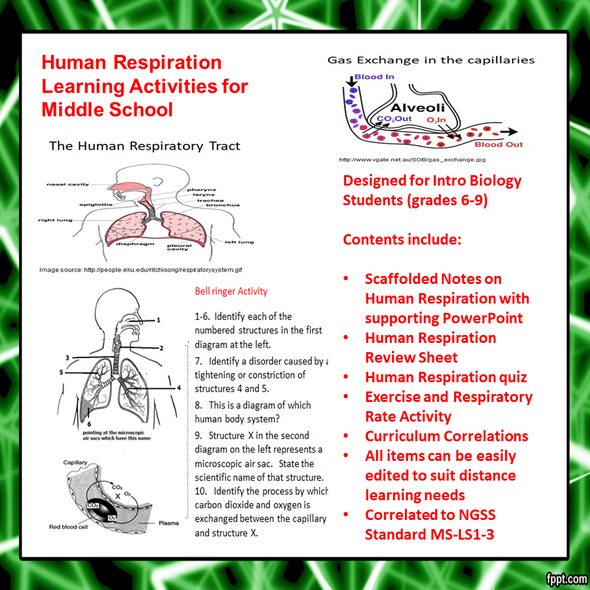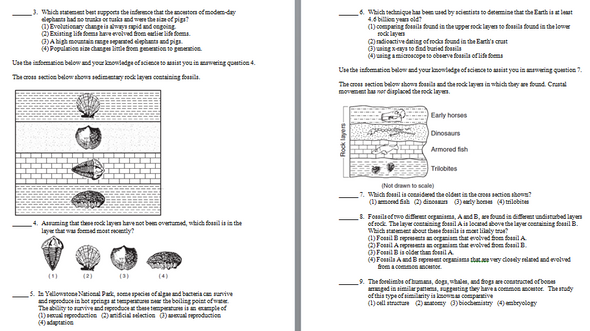Description
This zip file contains 9 different activities (26 pages of student handouts) which can be used to compose a unit for middle level science students introducing them to human excretion and human locomotion.
All documents with the exception of the PowerPoint are provided in both pdf and editable word format to allow you to modify any activity to meet the needs of your course. These documents are well suited for use in distance learning environments. Answer keys are included with all items.
Specifically it contains the following items:
- Curriculum Correlations Including NGSS and Common Core (2 pp.)
- Locomotion Scaffolded Completion Notes (4 pp.)
- PowerPoint to accompany the Locomotion Scaffolded Completion Notes (20 slides)
- Human Excretion Scaffolded Completion Notes (2 pp.)
- PowerPoint to accompany the Human Excretion Scaffolded Completion Notes (6 slides)
- Locomotion Worksheet (28 multiple choice, completion and short answer questions) (5 pp.)
- Human Excretion Worksheet (19 questions) (2 pp.)
- Muscle Tissue Slide and Drawing Pictures for Distance Learning Use (2 pp.)
- Locomotion Lab (6 pp.)
- Locomotion Quiz (18 multiple choice, completion and short answer questions) (3 pp.)
- Excretion Quiz (10 multiple choice and matching questions) (1 p.)
Introduction to Human Excretion and Locomotion Learning Goals
Upon completion of this unit the student will be able to:
1. define the term excretion.
2. list several metabolic processes which produce excretory wastes and state the specific waste(s) produced by each process.
3. explain the chief excretory functions of the lungs, liver and skin.
4. explain the role of the skin in the maintenance of temperature homeostasis in humans.
5. describe the two major functions of the kidney in the body.
6. given a diagram of the human urinary tract, identify the kidneys, ureter, urinary bladder and urethra.
7. state the functions of the ureter, urinary bladder, and urethra.
8. compare the nitrogenous waste removal process in land versus aquatic organisms.
9. define the term locomotion.
10. list five reasons locomotion enhances the ability of an organism to survive.
11. list five functions of the human skeleton.
12. describe cartilage and list three major functions it has.
13. explain the difference between tendons and ligaments.
14. describe the chief symptom of tendonitis and arthritis.
15. describe the appearance, function, and some locations of skeletal, smooth and cardiac muscle.
16. describe how muscle fatigue occurs and the cause of this.
17. recognize that organisms possess a great variety of locomotion structures.
NGSS Standard
MS-LS1-3. Use argument supported by evidence for how the body is a system of interacting subsystems composed of groups of cells.
Common Core State Standards Connections:
ELA/Literacy
RST.6-8.1 Cite specific textual evidence to support analysis of science and technical texts.
RI.6.8 Trace and evaluate the argument and specific claims in a text, distinguishing claims that are supported by reasons and evidence from claims that are not.
WHST.6-8.1 Write arguments focused on discipline content.
Mathematics
6.EE.C.9 Use variables to represent two quantities in a real-world problem that change in relationship to one another; write an equation to express one quantity, thought of as the dependent variable, in terms of the other quantity, thought of as the independent variable. Analyze the relationship between the dependent and independent variables using graphs and tables, and relate these to the equation.
Terms of Use
Purchase of the product is for classroom use by the purchaser only. It is a violation for individuals, schools, and districts to redistribute or sell this item on the Internet or to other individuals. I do encourage you to use and edit these documents to suit your needs with your own students in distance learning environments.
This work is licensed under a Creative Commons Attribution-NonCommercial-ShareAlike 4.0 International License.


















